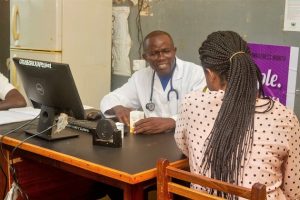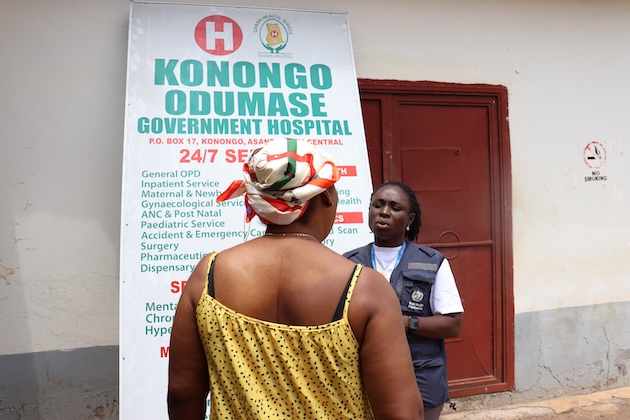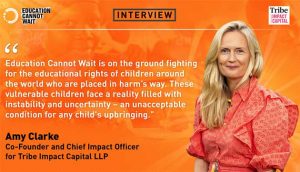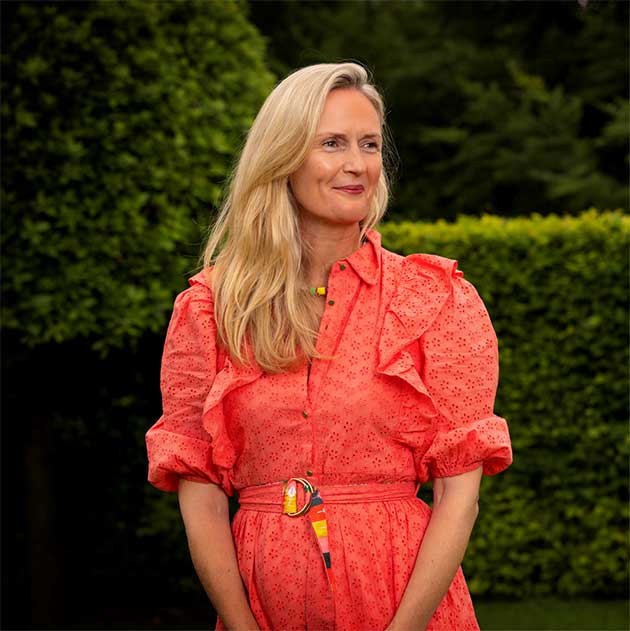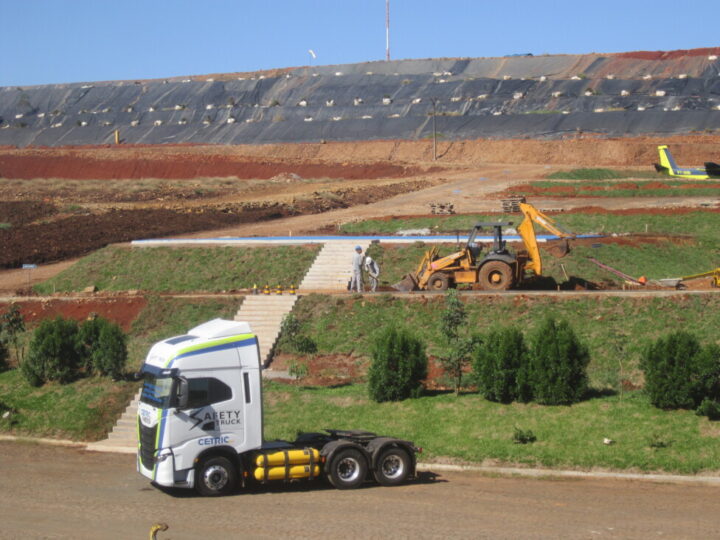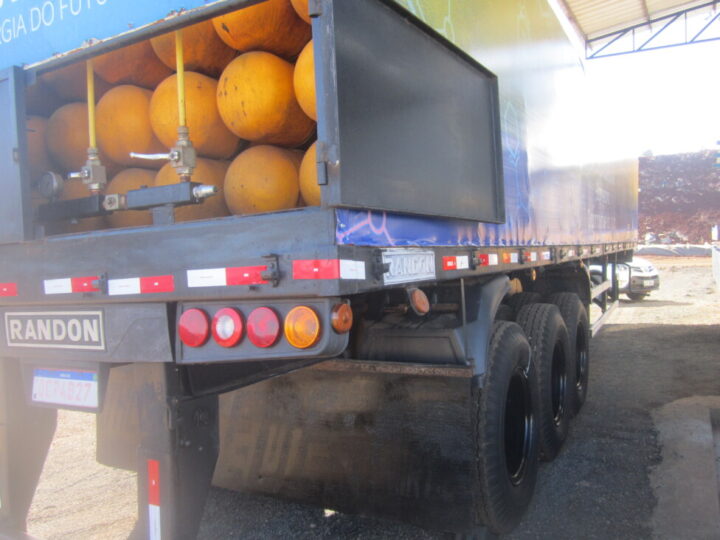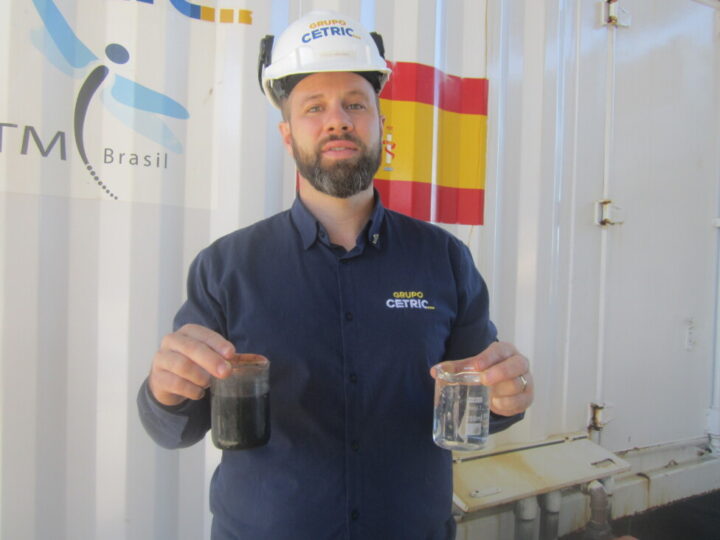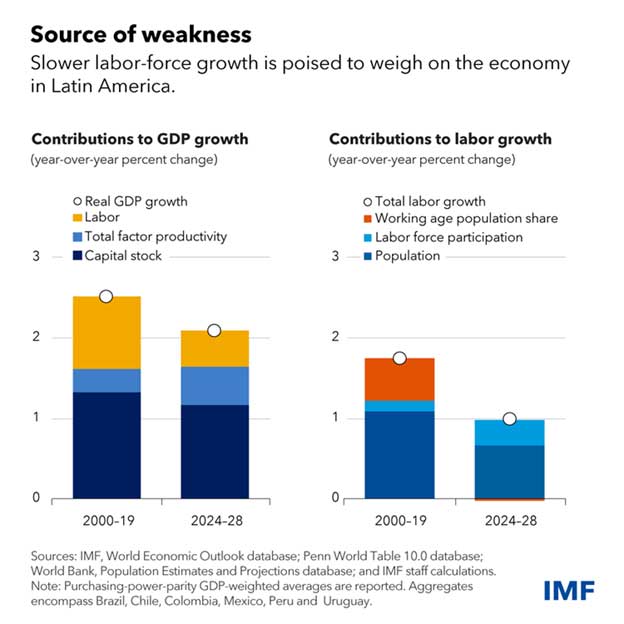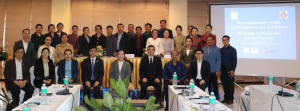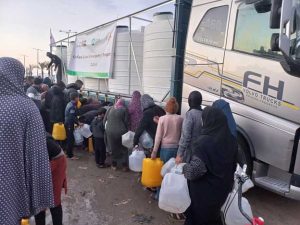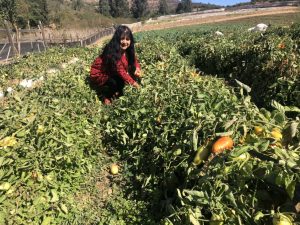
Rosa Guzmán harvests tomatoes on her family farm in San Pedro, in the municipality of Quillota, 126 kilometers north of Santiago, the Chilean capital, where she is unable to extend her crops due to lack of funds, which prevents her from drilling deeper wells to obtain water and combat the drought. Credit: Orlando Milesi/IPS
By Orlando Milesi
QUILLOTA, Chile , Apr 30 2024 – Lack of water threatens the very existence of family farming in Chile, forcing farmers to adopt new techniques or to leave their land.
The shortage is caused by a 15-year drought and exacerbated by the unequal distribution arising from the Water Code decreed in 1981 by the 1973-1990 dictatorship of General Augusto Pinochet, which turned water into a tradable commodity and gave its owners rights in perpetuity.
In addition, there are problems such as the accumulation of water rights in the hands of large agro-export companies and real estate speculation with the land of small farmers who are forced to sell.
“We have no water for human consumption,” Julieta Cortés, 52, president of the Rural Women’s Association of the municipality of Canela, told IPS. “In Canela, more than 80 percent of the population depends on the water truck that delivers 50 liters of water per person per day. It’s hard to get by with that amount.”
Located in the Coquimbo region, 400 kilometers north of Santiago, Canela, with a population of just over 11,000, was known for its goat herds, now reduced by half. Local farmers also used to grow wheat and barley. Today, the fruit trees are drying up and the livestock are dying of thirst.
In contrast, the extensive plantations of avocados for export are irrigated and green on the slopes of the dry valleys.
Chile’s agro-exports are one of its major sources of income, together with mining. In 2023, the agro-export sector accounted for 3.54 percent of GDP, or 10.09 billion dollars.
Water problems are concentrated in isolated rural areas that lack technical, economic, and infrastructure capacities.
“Family and small farmers do not have access to water rights controlled by those who have money and can buy and transfer them,” Cortés said in a telephone interview.
“The lower part of the Choapa River flows through my municipality and none of us who live here have access to the water that is used upstream in the Los Pelambres mine and the large agro-industries along the way,” she said.
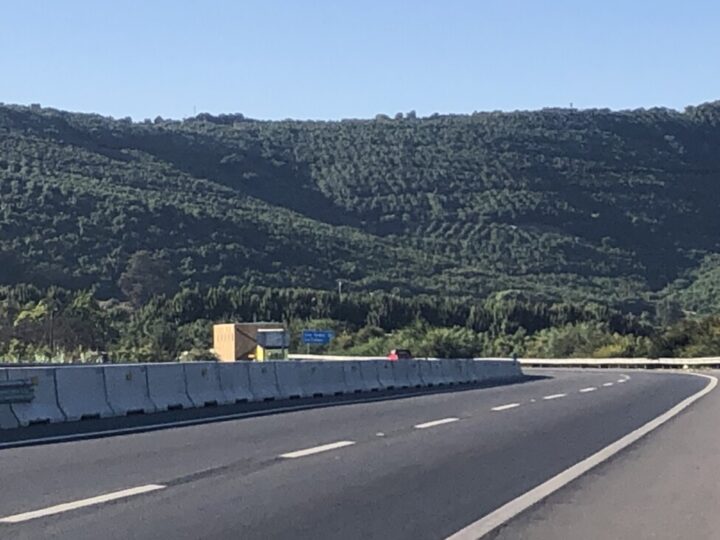
Hills stand out for their greenery in Quillota, north of Santiago, Chile, with avocado plantations that reach to the top, covering many hectares. They are able to avoid water shortages thanks to water use rights held by large agro-exporters, which allow them to evade the effects of the drought and send their abundant production abroad. Credit: Orlando Milesi/IPS
The Issue Is Not Lack of Water, but Inequality
In the publication Guardianas del Agua (Guardians of the Water), published by the German Heinrich Boll Stiftung Foundation, Macarena Salinas and Isaura Becker reported that 47.2 percent of the rural Chilean population had no formal drinking water supply or irrigation.
In this South American country, some 950 communities are not part of the Rural Drinking Water Program (RWP) and obtain water from informal sources such as wells, springs and water trucks. “We have a privatized water model where the focus and priority has always been to maintain the right to property over the human right of access to water.” — Evelyn Vicioso
The publication reported that between 2016 and 2021, the State invested 150 million dollars to use water trucks to supply the areas suffering from scarcity.
“While the RWP committees and cooperatives need drinking water and are supplied through emergency measures, there are individuals and companies that have surplus water and can profit from the sale of water using tanker trucks,” write Salinas and Becker.
Therefore, they point out, “rather than a lack of water, there is an unequal distribution of the resource.”
The drought in Canela has been repeated in other areas of this long, narrow country of 19.5 million people living between the Andes Mountains and the Pacific Ocean.
The shortage of rainfall has lasted for 15 years, with a brief respite in 2023. It is unclear what will happen in 2024.
In Canela, farmers survive by using recycled water from washing machines and bathrooms, water harvested from rooftops or with fog catchers, systems used to capture or trap microscopic water droplets from mist, which are widely used in Chile.
“We have been reinventing ourselves. We have even rescued water from the dew. Many of us have adopted new techniques; others have moved away,” Cortés said from her community, Carquindaña.
Rosa Guzmán, 57, and her three brothers own a 40-hectare property in San Pedro, a community of some 5,000 inhabitants in the municipality of Quillota, 126 kilometers north of Santiago in the Valparaíso region.
They only grow four hectares of vegetables and 2.5 hectares of avocados because they do not have the money to expand their crops.
“Sometimes we run out of water for the house because the wells are 10 meters deep. They are filled from two canals that rarely have water,” she said during a tour of the family’s farm with IPS.
Guzmán is director of the National Association of Rural and Indigenous Women (Anamuri) and president of her community’s environmental organization, San Pedro Digno.
Anamuri is an organization founded in 1998, composed solely of women, which organizes and promotes development among rural and indigenous women in this country. It also builds relationships of equality, regardless of gender, class, and ethnicity, on the basis of respect between people and nature.
“I used to collect medicinal herbs on the banks of the canal, but now there are none. The natural springs have dried up. This is a serious problem, and there are people who have no water to drink, which is a grave issue,” she said.
According to the rural activist, the State has abandoned small-scale agriculture.
“It would be very different if the State were to put more of a priority on small-scale agriculture and give us soft credits or subsidies. It has to pay attention to what is happening because, at this rate, it pains me to say it, family farming could disappear in Chile,” she said.
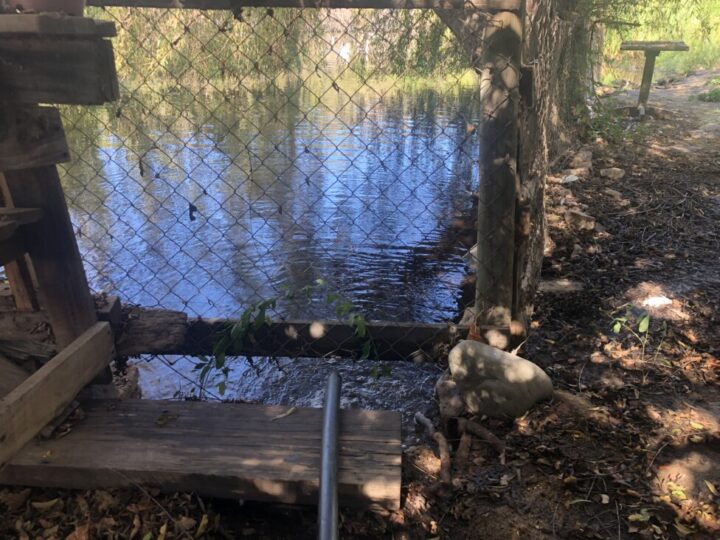
Water stored in a small reservoir allows the Guzmán siblings to maintain vegetable production on their 40-hectare plot of land, of which only 10 percent is planted due to a lack of resources. It is one of the few surviving family farms in the municipality. Credit: Orlando Milesi/IPS
Agro-export Model in the Spotlight
Water scarcity directly affects farmers’ livelihoods and way of life and often leads to complex environmental problems.
“The lack of safe water impacts household and community economies, especially for families who depend on small-scale family farming for their food,” write Salinas and Becker.
Guzmán criticized the agro-export model and called for a return to planting wheat, lentils and chickpeas, products that form part of Chile’s food security. But, she stressed, in order to do so, soft loans or subsidies are needed.
“We need food sovereignty. But if small farmers suffer losses every year, many end up selling their land. We want to live well without losing our identity and our know-how,” she underlined.
Sociologist Evelyn Vicioso, executive director of Sustainable Chile, criticized the agro-export model because “it is super intensive in water use and is extremely irresponsible with regard to crops. But above all, because it does not solve a problem nationally: the availability of water for many communities,” she said.
“We particularly depend on small-scale family farming for food, and if it disappears, we have a problem of costs and distribution. The big farmers think about ensuring food sovereignty for any country except their own communities,” she told IPS in Santiago.
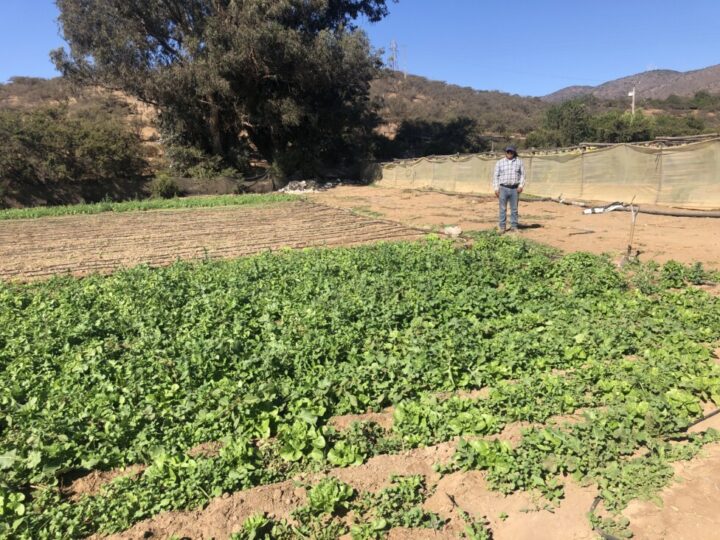
Hernán Guzmán, one of four siblings who own a plot of land in Quillota, inspects a small area dedicated to growing basil that is destined, along with other vegetables, for the market in the nearby port city of Valparaíso, in central Chile. Credit: Orlando Milesi/IPS
Watershed Management Slow To Take Off
To advance climate justice in a scenario of water scarcity, many experts agree on the need to manage watersheds with representative councils.
“Our country has a gigantic mass of mountains, but today we do not have a management system that allows us to link what happens in the headwaters with what is happening further downstream,” said Vicioso.
She listed a string of failures to create watershed councils, as there have been 25 attempts since 1994 and only one is functioning.
There is no will to create them, especially among water rights owners.
“We have a privatized water model where the focus and priority have always been to maintain the right to property over the human right of access to water,” said Vicioso.
Salinas and Becker regret that the 2005 reforms to the Water Code are not retroactive.
“This generates the conditions for the holders of water use rights to exploit the water with a strictly economic focus, thus discouraging the development of uses not involving extractive industries, such as ancestral and ecological uses,” they argue.
The regulation hinders integrated management of the water cycle, as it does not consider the river basin as the minimum unit, does not establish mechanisms to jointly manage surface and groundwater, and allows rivers to be sectioned off.
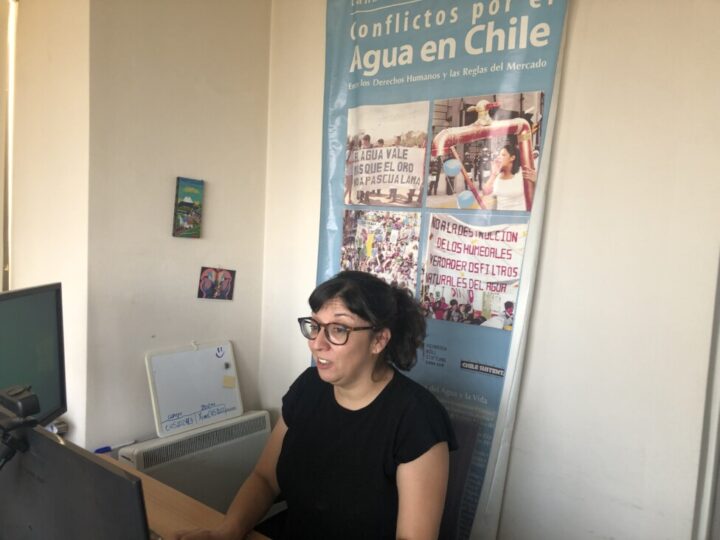
Evelyn Vicioso, executive director of the non-governmental organization Sustainable Chile, sits in her office in Santiago, where she monitors the water situation among small farmers and coordinates actions to defend the human right to water. Credit: Orlando Milesi/IPS
Land speculation
In Quillota there is a growing sale of agricultural land to real estate companies that resell it as non-productive family recreational plots.
Thus, native trees disappear and the hope of reviving family farming is waning.
“Land has become a business. It sells for 60 million pesos (60,000 dollars) per half a hectare that sometimes does not even have water. That value attracts people to sell,” Guzmán said.
These plots will increase the demand for water and deforestation because the government’s Agriculture and Livestock Service (SAG) has no oversight capacity.
“All the hills are being parceled out and water is brought to these people with water trucks,” said Guzmán.
Migration from the countryside has been driven by climate change.
In Canela, said Cortés, it used to be young people who moved away. But now it is entire families who go to nearby cities in search of access to water.
According to Guzmán, “young people do not want to stay in the countryside and women say that it is not even profitable to raise chickens.”
Cortés is grateful for the water from trucks, but stresses that the underlying problem is restoring watershed management.
“To rebuild this, resources must be allocated. And for that, we need forestation to make barriers to retain the scarce rainfall and restore the hydrological system,” she said.
Vicioso complained that “there is a lack of protection of the glaciers, which are the headwaters of the basins where the water comes from.”
The sociologist also urged a rethinking of the intensive use of water in productive activities.
“We have an underlying political problem with water that has a high market value and a State that does not dare, does not want, and does not seek the tools to intervene in this deregulated market, just like in drug trafficking,” she said.
IPS UN Bureau Report

